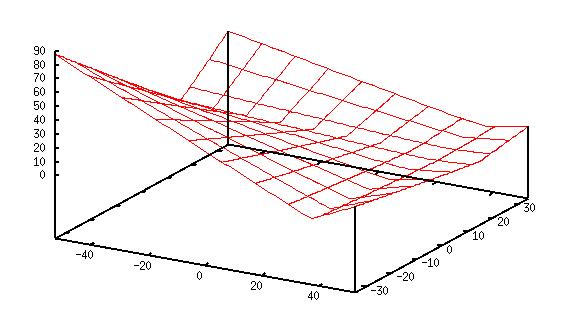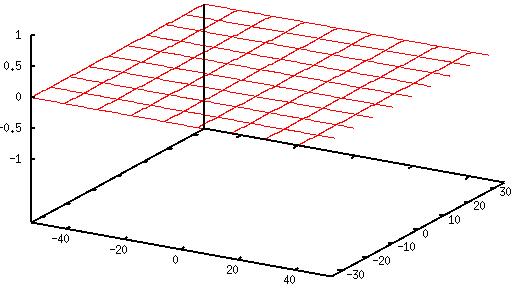
Fig 1:This is the potential fuction
of a empty field for a player who has to score towards
right.Note how the potential function
increases towards the opponent's goal and drops
sharply at the boundaries encouraging
the player to move towards the opponent's goal
and also to stay within the field.


